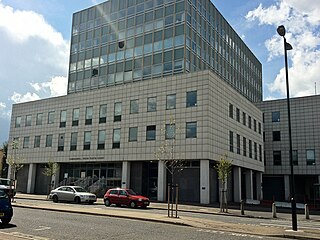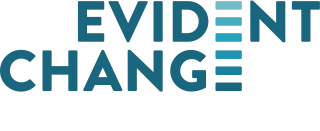
In criminal justice, particularly in North America, correction, corrections, and correctional, are umbrella terms describing a variety of functions typically carried out by government agencies, and involving the punishment, treatment, and supervision of persons who have been convicted of crimes. These functions commonly include imprisonment, parole, and probation. A typical correctional institution is a prison. A correctional system, also known as a penal system, thus refers to a network of agencies that administer a jurisdiction's prisons, and community-based programs like parole, and probation boards. This system is part of the larger criminal justice system, which additionally includes police, prosecution and courts. Jurisdictions throughout Canada and the US have ministries or departments, respectively, of corrections, correctional services, or similarly-named agencies.

Juvenile delinquency, also known as juvenile offending, is the act of participating in unlawful behavior as a minor or individual younger than the statutory age of majority. The term delinquent usually refers to juvenile delinquency, and is also generalised to refer to a young person who behaves an unacceptable way.

The Juvenile Delinquents Act, SC 1908, c 40 was a law passed by the Parliament of Canada to improve its handling of juvenile crime. The act established procedures for the handling of juvenile offenses, including the government assuming control of juvenile offenders. It was revised in 1929 and superseded in 1984 by the Young Offenders Act.

A reform school was a penal institution, generally for teenagers mainly operating between 1830 and 1900. In the United Kingdom and its colonies reformatories commonly called reform schools were set up from 1854 onwards for youngsters who were convicted of a crime as an alternative to an adult prison. In parallel, "industrial schools" were set up for vagrants and children needing protection. Both were 'certified' by the government from 1857, and in 1932 the systems merged and both were 'approved' and became approved schools.

A juvenile court, also known as young offender's court or children's court, is a tribunal having special authority to pass judgements for crimes that are committed by children who have not attained the age of majority. In most modern legal systems, children who commit a crime are treated differently from legal adults that have committed the same offense.

In criminal justice systems, a youth detention center, known as a juvenile detention center (JDC), juvenile detention, juvenile jail, juvenile hall, or more colloquially as juvie/juvy, also sometimes referred as observation home or remand home is a prison for people under the age of majority, to which they have been sentenced and committed for a period of time, or detained on a short-term basis while awaiting trial or placement in a long-term care program. Juveniles go through a separate court system, the juvenile court, which sentences or commits juveniles to a certain program or facility.

The penal system of Japan is part of the criminal justice system of Japan. It is intended to resocialize, reform, rehabilitate and punish offenders. The penal system is operated by the Correction Bureau of the Ministry of Justice.
Winlaton Youth Training Centre was a Government owned and run female youth correctional facility located on 18 acres (73,000 m2) at 186 Springvale Road Nunawading, Victoria, Australia. The facility was designed to accommodate 14- to 18-year-old wards of the state. It opened in 1956 as the Winlaton Juvenile School, and closed in 1993 as the Nunawading Youth Residential Facility. A housing estate now occupies the site.

The American juvenile justice system is the primary system used to handle minors who are convicted of criminal offenses. The system is composed of a federal and many separate state, territorial, and local jurisdictions, with states and the federal government sharing sovereign police power under the common authority of the United States Constitution. The juvenile justice system intervenes in delinquent behavior through police, court, and correctional involvement, with the goal of rehabilitation. Youth and their guardians can face a variety of consequences including probation, community service, youth court, youth incarceration and alternative schooling. The juvenile justice system, similar to the adult system, operates from a belief that intervening early in delinquent behavior will deter adolescents from engaging in criminal behavior as adults.
The child-saving movement emerged in the United States during the nineteenth century and influenced the development of the juvenile justice system. Child savers stressed the value of redemption and prevention through early identification of deviance and intervention in the form of education and training.
In re Gault, 387 U.S. 1 (1967), was a landmark U.S. Supreme Court decision which held the Due Process Clause of the 14th Amendment applies to juvenile defendants as well as to adult defendants. Juveniles accused of crimes in a delinquency proceeding must be afforded many of the same due process rights as adults, such as the right to timely notification of the charges, the right to confront witnesses, the right against self-incrimination, and the right to counsel. The court's opinion was written by Justice Abe Fortas, a noted proponent of children's rights.
A diversion program, also known as a pretrial diversion program or pretrial intervention program, in the criminal justice system is a form of pretrial sentencing that helps remedy behavior leading to the arrest. Administered by the judicial or law enforcement systems, they often allow the offender to avoid conviction and include a rehabilitation program to prevent future criminal acts. Availability and the operation of such systems differ in different countries.
Juvenile law pertains to those who are deemed to be below the age of majority, which varies by country and culture. Usually, minors are treated differently under the law. However, even minors may be prosecuted as adults.
Juvenile delinquency in the United States refers to crimes committed by children or young people, particularly those under the age of eighteen.

The United States incarcerates more of its youth than any other country in the world through the juvenile courts and the adult criminal justice system, which reflects the larger trends in incarceration practices in the United States. In 2010, approximately 70,800 juveniles were incarcerated in youth detention facilities alone. As of 2006, approximately 500,000 youth were brought to detention centers in a given year. This data does not reflect juveniles tried as adults. As of 2013, around 40% were incarcerated in privatized, for-profit facilities.

The criminal justice system of the Netherlands is the system of practices and institutions of the Netherlands directed at upholding social control, deterring and mitigating crime, and sanctioning those who violate laws with criminal penalties and rehabilitation efforts. The Netherlands' criminal code is based on the Napoleonic Code, imposed during the time of the French Empire. The Dutch largely kept the Napoleonic Code after their independence, but tempered it with a significantly more rehabilitative penological focus.
A rehabilitation policy within criminology, is one intending to reform criminals rather than punish them and/or segregate them from the greater community.

Evident Change, formerly the National Council on Crime and Delinquency (NCCD), is an American nonprofit social research organization. NCCD was organized by fourteen probation officers who met at Plymouth Church in Minneapolis, Minnesota, on June 17, 1907, to establish a volunteer professional organization in the emerging field of probation. The group adopted by-laws in 1909, and committees began doing year-round volunteer work. They named themselves the National Probation Association (NPA). Within their first decade, they were active in pursuit of progressive system reforms. The NPA’s focus was to study, establish, expand, and standardize juvenile probation, juvenile courts, and family courts. Charles Chute became the first paid executive of the NPA in 1921. In 1947 the NPA merged with the American Parole Association to form the National Probation and Parole Association (NPPA). In 1960, the organization’s name was changed to the National Council on Crime and Delinquency (NCCD) to reflect its growth and larger public policy interests. During the Nixon Administration, NCCD challenged existing policies and critiqued the criminal justice system. Part of the Board of Directors wanted to focus on generic support of prevention efforts; NCCD subsequently parted company with several board members who created an independent crime prevention council, Citizens for Justice with Order. In 1993, the Children’s Research Center was created as part of NCCD to encompass reform of the child welfare system.

Gender responsive approach for girls in the juvenile justice system represents an emerging trend in communities and courts throughout the United States, Australia and Latin America, as an increasing number of girls are entering the juvenile justice system. A gender responsive approach within the juvenile justice system emphasizes considering the unique circumstances and needs of females when designing juvenile justice system structures, policies, and procedures.
Linda A. Teplin is an American behavioral scientist and public health researcher. Her research focuses on the interface between mental health and the criminal justice system, criminalization of the mentally ill, and mental health needs and related health outcomes of incarcerated populations, including those in juvenile detention, jails, and prisons. Many of her published papers investigate the prevalence of psychiatric disorders, mortality, patterns of crime victimization, health service utilization, disproportionate incarceration of minorities, and HIV/AIDS risk behaviors. Her research has provided the empirical basis for changes in public health and criminal justice policy.











